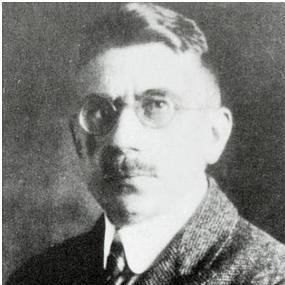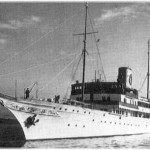In my last blog (“The Mystery of Enigma,” May 1, 2018), we explored the ingenious design of the German Enigma machine. The encryption device provided so many possible permutations for each letter in a message that it seemed impossible for Enigma’s code to be broken.
Despite Enigma’s close association with World War II, the device actually was developed at the end of World War I. Arthur Scherbius, the German engineer who created the Enigma, sought to interest the German navy and the Foreign Office in his newly patented design in 1919, but both turned him down.
Scherbius formed a company and exhibited his first machine in 1924 at an international gathering of postal officials. That first model, marketed under the brand name “Enigma,” incorporated an actual typewriter, weighed just over 100 lbs., and lacked many of the refinements of later models.
By 1927 Scherbius designed a machine that was lighter and more portable. The new model proved popular, and the company sold Enigmas to commercial markets in Europe, Scandinavia, the United States, and Japan. At about the same time, the German navy and army acquired upgraded Enigmas that included the plugboard design, a feature not available on commercial models.
Over the next decade, the German military models underwent further tweaks and upgrades to become even more inscrutable than their commercial cousins. For example, the army’s Enigma version incorporated a fourth wheel, while the navy continued to use the three-wheel design but introduced two additional wheels that could be interchanged with any of the three original wheels.
Beginning in the late 1920’s military intelligence operations in Britain, France and Poland set about trying to break the German military Enigma code. They had no success until late 1931 when an executive in the German Defense Ministry began spying for the French and provided a copy of the Enigma instruction manual as well as three-letter codes used to set up the machines.
This material was passed by the French to the Poles, who were further along with their decryption efforts owing to the Poles’ greater affinity with German engineering and their proximity to a re-arming German state. Using the spy’s information, Polish mathematicians succeeded in working out the internal wiring of each of the Enigma wheels, and in 1933 Polish intelligence built several prototype Enigmas and began to read German military communications. The Poles, however, did not inform the French or British of their success.
Every day each branch of the German military set their Enigma machines to a pre-arranged master setting which included the order of the wheels, the setting of the initial letter on each wheel, and the plugboard connections. From this arrangement, the sender transmitted a new random three-letter code for the initial wheel settings then adjusted the machine’s wheels to the new settings and typed the message. The receiver decoded the initial three letters, re-set the receiving machine’s wheels accordingly and decoded the message that followed.
The Poles used an arrangement of six prototype Enigmas to determine the wheel positions of the German machines each day. To read individual messages, they relied on the German practice of repeating the random three-letter setting at the beginning of each transmission.
The Polish cryptographers were able to keep up with most German modifications, reading military communications for nearly five years. On the eve of World War II the Germans made physical changes to their Enigma machines and changed code-sending practices, leaving Polish intelligence unable to “eavesdrop” on the German military. The battle to solve Enigma shifted to a new front, as we’ll see in our next blog.






